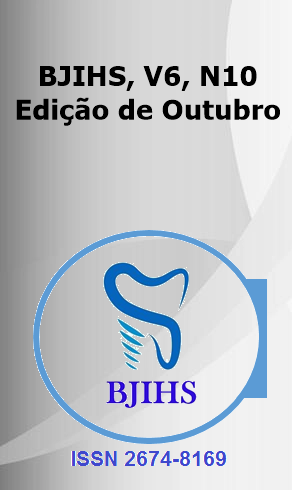Abstract
The increasing bacterial resistance to antibiotics (RBA) poses a significant threat to global public health, hindering the effective treatment of both community-acquired and hospital-acquired infections. This study aims to analyze the main mechanisms responsible for bacterial resistance, such as the production of β-lactamases, modifications in targets and efflux mechanisms. In addition, it explores the clinical and economic implications associated with this resistance. Recent studies highlighting programs of rational use of antibiotics (stewardship), new therapeutic approaches and the economic impact generated by infections caused by resistant bacteria were reviewed. The text also discusses innovative strategies for the control of RBA, such as the development of modern therapies and the use of advanced technologies, such as CRISPR. The conclusions emphasize the importance of stricter public policies and the adoption of new therapeutic strategies to contain the spread of multidrug-resistant bacteria.
References
BARLAM, T. F., COSGROVE, S. E., ABBO, L. M. et al. Implementing an Antibiotic Stewardship Program: Guidelines by the Infectious Diseases Society of America and the Society for Healthcare Epidemiology of America. Clinical Infectious Diseases, v. 62, n. 10, p. e51–e77, 2016. Disponível em: https://academic.oup.com/cid/article/62/10/e51/2462847 . Acesso em: 01 out. 2024.
BUSH, K. Past and Present Perspectives on β-Lactamases. Antimicrobial Agents and Chemotherapy, v. 62, n. 10, p. 1-15, 2018. Disponível em: https://journals.asm.org/doi/10.1128/AAC.01076-18 . Acesso em: 02 out. 2024.
CDC. Antibiotic Resistance Threats in the United States. Centers for Disease Control and Prevention, 2021. Disponível em: https://www.cdc.gov/drugresistance/pdf/threats-report/2021-ar-threats-report-508.pdf. Acesso em: 02 out. 2024.
DAVIES, J. E. Origins and Evolution of Antibiotic Resistance. Microbiol Spectrum, v. 7, n. 2, p. 1-15, 2019. Disponível em: https://journals.asm.org/doi/10.1128/microbiolspec.ARBA-0019-2018 . Acesso em: 02 out. 2024.
LI, X.-Z., PLESIAK, P., NIKAIDO, H. Efflux-mediated Antimicrobial Resistance in Bacteria. Clinical Microbiology Reviews, v. 28, n. 2, p. 337–418, 2015. Disponível em: https://journals.asm.org/doi/10.1128/CMR.00117-14 . Acesso em: 03 out. 2024.
O’NEILL, J. Tackling Drug-Resistant Infections Globally: Final Report and Recommendations. The Review on Antimicrobial Resistance, 2016. Disponível em: https://amr-review.org/sites/default/files/160518_Final%20paper_with%20cover.pdf . Acesso em: 3 out. 2024.
SILVER, L. L. Challenges of Antibacterial Discovery. Clinical Microbiology Reviews, v. 24, n. 1, p. 71–109, 2019. Disponível em: https://journals.asm.org/doi/10.1128/CMR.00030-18 . Acesso em: 3 out. 2024.
WHO. Global Action Plan on Antimicrobial Resistance. World Health Organization, 2020. Disponível em: https://www.who.int/publications/i/item/9789241509763. Acesso em: 3 out. 2024.

This work is licensed under a Creative Commons Attribution 4.0 International License.
Copyright (c) 2024 Marília Ursulino Barbosa, Lívia Matos de Menezes, Anna Cecília Ferreira Miranda, Paloma Chamun Mameri

